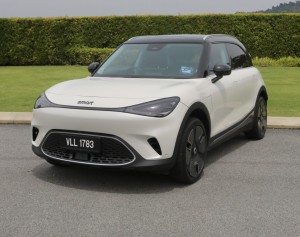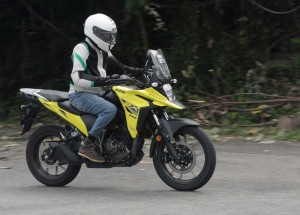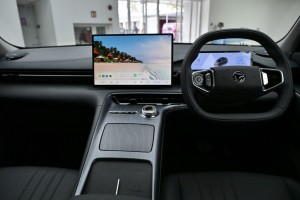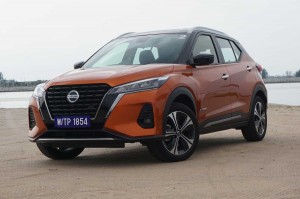An AI rendering of what a pedestrian- and bike-friendly street could look like in Austin. - Street View © 2022, Google / Courtesy of Rachit Dubey, Rahul Bhui, Thomas L. Griffiths and Mathew D. Hardy.
WASHINGTON: AI-generated illustrations of streets with bike lanes, bus lanes and fewer cars have the power to persuade, a new study finds.Efforts to limit cars on some streets and create pedestrian or bike-friendly infrastructure have become polarising in the US, with some opponents seeing them them as a restriction on movement and a “war on cars.”
But people who see what living with fewer vehicles looks and feels like are more likely to find these kinds of greener communities desirable.
That’s the takeaway from a new study in the journal Nature, which found that showing AI-generated images of a less car-reliant American city boosted support for sustainable transportation policies.
“Let’s help them imagine what it would actually be like to live in a car-less neighborhood, and a car-less city,” says Rachit Dubey, a postdoctoral associate at MIT Sloan School of Management who studies the intersection of computer science, psychology and climate change.
In the study, Dubey and his team first presented 3,100 participants with a hypothetical US$500 billion bill that would replace half of all car lanes in the US with bus lanes, bike lanes and wider sidewalks.
Participants were then shown a photograph from Google Street View of a car-heavy street, followed by three different types of “after” illustrations of how the bill would affect that street.
Participants who saw an “after” image of an AI-generated architectural rendering of the street with pedestrian- and transit-friendly infrastructure were more likely to report stronger support for the bill — and were more willing to sign a petition for it — than those who were simply shown a slide with words like “greener” and “bikeable,” or those words alongside rudimentary cartoons of trains and trees.
AI images were generated with the program Dall-E 2 using text prompts.
One before-and-after pair turned a four-lane roaway in Chicago into a road with only one lane for cars, and the rest of the space for buses and bikes.
In another, the program took a photo of Canal Street congested with cars in Lower Manhattan and changed it into a pedestrian walkway flanked by lush green space. The goal, Dubey says, was to give participants a visual that is realistic and concrete.
When researcher analysed the data by political leaning, the difference the AI images made in participants’ likelihood to support the bill was greatest among Republicans.
Participants were asked to rate the bill on a scale from one to 10. Among Republicans, those who were shown only words like “bikeable” had an average rating of 3.7, versus 3.5 among those shown a cartoon image, and 4.8 among those shown the AI rendering.
For Democrats, the baseline average rating for those shown words and cartoons only were much higher — 6.7. It also increased, but not quite as much, to 7.5 for those who saw an AI image. Among Independents, the average support rating for participants who saw the AI rendering was 6.1, compared to 5.4 for those who saw just text and 5.6 for those shown a combination of text and a cartoon.
Historically, Republicans have been less likely than Democrats to support public spending on mass transit projects. They’re also more likely to prefer living in spread-out communities with larger homes, as opposed to denser neighbourhoods with smaller houses, according to a recent survey from the Pew Research Center.
“By constructing these kinds of visualisations, to me, that helps to bring people onto the same page,” says Rahul Bhui, a co-author of the study and an assistant marketing professor who studies behavioural economics at MIT.
“Maybe a shared vision of what it could look like, that is not as controversial.” The study’s co-authors also included Thomas Griffiths and Mathew Hardy, researchers at Princeton University.
A goal of the study is to give an early look at the role of computer and behavioural sciences in public policy.
Researchers say the policymakers in the future may choose to work with artists or architects instead of AI to create equally realistic renderings, but the technology could serve as a tool for generating images easily and quickly.
The researchers also say that the results could apply to other types of green initiatives or environmental regulations that can draw sharply opposing views from the public.
“Oftentimes, when we are talking about sustainable policies, they’re often put under the umbrella of climate change, which can become polarizing very quickly,” Dubey says.
Visuals, AI- or human-generated, can help policymakers focus on the economic and well-being aspects, which redirects the conversation to how “having these policies would actually improve people’s lives.”












